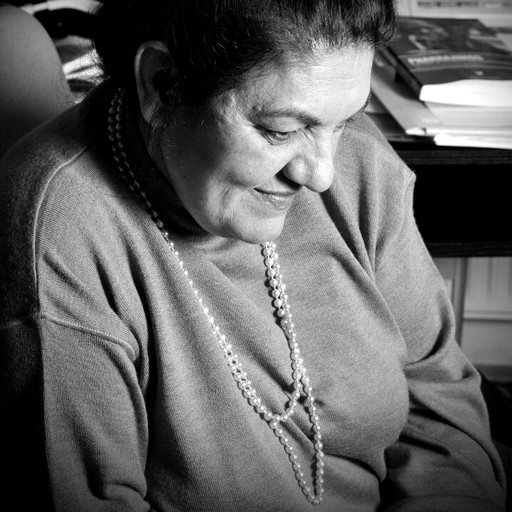‘My greatest desire is to set up the Roma Research Centre, the exploration of the destinies of the Roma victims of the Holocaust, to let the survivors that can still be found speak.’
Ágnes Daróczi was born in 18 November 1954 in Berettyóújfalu. She holds a degree as secondary school teacher (1978, ELTE BTK), specialized in Hungarian language and literature. Moreover she is a cultural manager, reciter, journalist and minority researcher.
Ágnes Daróczi says about herself:
‘I was raised in Bedő, a Romanian/Hungarian Roma village of hardly 300 residents, as the first of five children in our family. I was one of the first Roma women to obtain an university degree. In high school I specialized in chemistry and physics and was preparing to become a chemist for two years, yet my attraction towards arts and my creativity defeated natural sciences.
That motivated me in organizing the very first exhibition of Roma painters in May 1979. Looking back from todays perspective it can be stated: Roma Art was born there and then. We founded the Kalyi Jag ensemble – to be the first in achieving international success and having records published – as early as in 1978; my husband, János Bársony was the leader of the ensemble until 1984, playing the mandolin. I tried to make use of the opportunities offered by journalism and film making in the interests of my people.
For the first time in history of the Hungarian television, MTV commemorated the 50th anniversary of the Roma Holocaust (2 August 1994) in an 8-hour program flow. Great artists such as the film director Miklós Jancsó, the writer Menyhért Lakatos, the painter Tamás Péli or Stefan Grapelli, playing music with Django Reinhardt, came to our assistance in this.
The most successful example of our cooperation was the prevention of the plans for a “Gypsy ghetto” in Miskolc (Anti-Ghetto Committee). This was the path that lead to the establishment of the first democratic Roma organization Phralipe.
The Invisible College of Romaversitas came into being to help the till then largely missing Roma intelligentsia; I undertook its direction (as an half-time job) for three years. My students included excellent artists, a philosopher returning home to aid his community, committed staff members of international foundations and young people proving themselves in public administration.
As part of a PHARE-project, following the analysis of an extraordinary set of data and several decades research work, a first Roma Holocaust exhibition was arranged (2004) followed by the design of a book on the same subject. The Pharrajimos – romák sorsa a Holocaust idején has since been published also in English and Croatian.
Upon my initiative, at last we managed to set up the Memorial of the Roma Victims of the Holocaust by the Danube in Budapest. The place occupied symbolically in space and in memory has continuously been in the crossfire of debate and conflict.
The only remaining path for civilians is to give vent to their protest through demonstrations. That was the path that I too took when speaking up against the foundation of the Magyar Gárda (Hungarian Guard), against their terrorist actions in Hejőszalonta and Cegléd, etc.
It was our voluntary organizations that provided genuine help to the families of the victims of the serial murder. Initiated by the German National Football Team and the largest German Roma-Sinti organization and coordinated by Phralipe, the International Rebuilding Action (under my leadership) assisted 12 families to rebuild their homes between 2010 and 2012.
The Romano Instituto Foundation was established in 2010, by private persons, in order to urge on the creation of the Roma institutions missing to this day, to promote mutual acceptance and the inclusion of the Roma with the instruments of science, research and public discussion. I put my skills and capabilities to the service of this foundation.’




